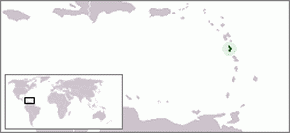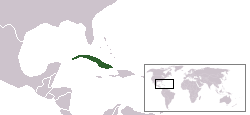|
Sarasinula Plebeia
''Sarasinula plebeia'', commonly called the bean slug or the Caribbean leatherleaf slug, is a species of air-breathing land slug, a terrestrial pulmonate gastropod mollusk in the family Veronicellidae, the leatherleaf slugs. As of November 2012, some websites and databases (including the ITIS entry) have a species listed as "''Sarasomia plebeia''" by the same author. Distribution ''Sarasinula plebeia'' was originally discovered and described under name ''Vaginulus plebeius'' by French zoologist Paul Henri Fischer from New Caledonia in 1868. The type locality is New Caledonia. The distribution of ''Sarasinula plebeia'' includes: * CubaMaceira D. F. (2003). "Las especies de la familia Veronicellidae (Mollusca, Soleolifera) en Cuba". ''Revista de Biología Tropical'' 51(3): 453-461PDF. * Jamaica * Saint Martin, Leeward IslandsForcart L. (1973). "Notes on Veronicellidae and Athoracophoridae in Field Museum of Natural History, Chicago". ''The Nautilus'' 87(1)2527. * Dominica * Ca ... [...More Info...] [...Related Items...] OR: [Wikipedia] [Google] [Baidu] |
Animalia
Animals are multicellular, eukaryotic organisms in the biological kingdom Animalia. With few exceptions, animals consume organic material, breathe oxygen, are able to move, can reproduce sexually, and go through an ontogenetic stage in which their body consists of a hollow sphere of cells, the blastula, during embryonic development. Over 1.5 million living animal species have been described—of which around 1 million are insects—but it has been estimated there are over 7 million animal species in total. Animals range in length from to . They have complex interactions with each other and their environments, forming intricate food webs. The scientific study of animals is known as zoology. Most living animal species are in Bilateria, a clade whose members have a bilaterally symmetric body plan. The Bilateria include the protostomes, containing animals such as nematodes, arthropods, flatworms, annelids and molluscs, and the deuterostomes, containing the echinode ... [...More Info...] [...Related Items...] OR: [Wikipedia] [Google] [Baidu] |
Pulmonate
Pulmonata or pulmonates, is an informal group (previously an order, and before that a subclass) of snails and slugs characterized by the ability to breathe air, by virtue of having a pallial lung instead of a gill, or gills. The group includes many land and freshwater families, and several marine families. The taxon Pulmonata as traditionally defined was found to be polyphyletic in a molecular study per Jörger ''et al.'', dating from 2010. Pulmonata are known from the Carboniferous Period to the present. Pulmonates have a single atrium and kidney, and a concentrated, symmetrical, nervous system. The mantle cavity is located on the right side of the body, and lacks gills, instead being converted into a vascularised lung. Most species have a shell, but no operculum, although the group does also include several shell-less slugs. Pulmonates are hermaphroditic, and some groups possess love darts. Linnean taxonomy The taxonomy of this group according to the taxonomy of the Ga ... [...More Info...] [...Related Items...] OR: [Wikipedia] [Google] [Baidu] |
List Of Non-marine Molluscs Of Mexico
The non-marine molluscs of Mexico are a part of the molluscan wildlife of Mexico. A number of species of non-marine molluscs are found in the wild in Mexico. There are about 1,178 species and subspecies of terrestrial gastropods in the Mexico.Naranjo-García E. & Fahy N. E. (2010). "The Lesser Families of Mexican Terrestrial Molluscs". '' American Malacological Bulletin'' 28(1-2): 59-80. . There are not enough records of terrestrial gastropods from states of Aguascalientes and Tlaxcala. Freshwater gastropods Neritidae * '' Clypeolum latissimum'' (Broderip, 1833)Alexander Czaja, Iris Gabriela Meza-Sánchez, José Luis Estrada-Rodríguez, Ulises Romero-Méndez, Jorge Sáenz-Mata, Verónica Ávila-Rodríguez, Jorge Luis Becerra-López, Josué Raymundo Estrada-Arellano, Gabriel Fernando Cardoza-Martínez, David Ramiro Aguillón-Gutiérrez, Diana Gabriela Cordero-Torres, Alan P. Covich (2020). "The freshwater snails (Mollusca: Gastropoda) of Mexico: updated checklist, endemicit ... [...More Info...] [...Related Items...] OR: [Wikipedia] [Google] [Baidu] |
Saba (island)
Saba (; , ) is a Caribbean island which is the smallest special municipality (officially “public body”) of the Netherlands. It consists largely of the active volcano Mount Scenery, which at is the highest point of the entire Kingdom of the Netherlands. The island lies in the northern Leeward Islands portion of the West Indies, southeast of the Virgin Islands. Together with Bonaire and Sint Eustatius it forms the BES islands. Saba has a land area of . The population was 1,933 in January 2020, with a population density of . It is the smallest territory by permanent population in the Americas. Its towns and major settlements are The Bottom (the capital), Windwardside, Zion's Hill and St. Johns. Etymology Theories about the origin of Saba's name include ''siba'' (the Arawakan word for 'rock'), ''sabot'', ''sábado'', and Sheba. The island was referred to by its present name, Saba, as early as 1595 when it appeared in a voyage account by John Hawkins. Before its present name, ... [...More Info...] [...Related Items...] OR: [Wikipedia] [Google] [Baidu] |
Canouan
Canouan (pronounced "can - ah - wan") is an island in the Grenadines belonging to Saint Vincent and the Grenadines. It is a small island, measuring only 5.6 km (3.5 miles) by 2 km (1.25 miles) and has a surface of 7.6 km². It lies approximately 40 km (25 miles) south of the island of St. Vincent. The population is about 1,700. A barrier reef runs along the Atlantic side of the island. The highest point on the island is Mount Royal. Two bays, Glossy and Friendship, are located on the southern side of the island. History Some time prior to 200 B.C. a cultivated tribe called the Arawaks reached the island using dug-out canoes. These new residents brought plants, animals, and basic farming and fishing skills with them. They lived there for 1,500 years until the Caribs invaded the island. More than 200 years after Columbus laid eyes on St. Vincent, the Europeans established a kind of permanent settlement. Its mountainous and heavily forested geography allowed the ... [...More Info...] [...Related Items...] OR: [Wikipedia] [Google] [Baidu] |
List Of Non-marine Molluscs Of Dominica
The non-marine molluscs of Dominica are species of land and freshwater molluscs, i.e. land snails, land slugs and one small freshwater clam that are part of the wildlife of Dominica, an island in the Lesser Antilles. In malacology, the non-marine molluscs of an area are traditionally listed separately from the marine molluscs (those molluscs that live in full-salinity saltwater). Dominica is a Caribbean island, part of the Windward Island chain of the Lesser Antilles. Fifty-five species of non-marine molluscs have been found in the wild in Dominica, including sixteen endemic species of land snails, species which occur nowhere else on Earth. Dominica is a mountainous, , volcanic, tropical island. It is undeveloped compared with most other Caribbean islands, and it is known for its wildlife and unspoiled natural landscapes. The rugged terrain includes a great deal of tropical rainforest, numerous rivers, and several officially protected areas, including Morne Trois Pitons National ... [...More Info...] [...Related Items...] OR: [Wikipedia] [Google] [Baidu] |
Field Museum Of Natural History
The Field Museum of Natural History (FMNH), also known as The Field Museum, is a natural history museum in Chicago, Illinois, and is one of the largest such museums in the world. The museum is popular for the size and quality of its educational and scientific programs, and its extensive scientific-specimen and artifact collections. The permanent exhibitions, which attract up to two million visitors annually, include fossils, current cultures from around the world, and interactive programming demonstrating today's urgent conservation needs. The museum is named in honor of its first major benefactor, Marshall Field, the department-store magnate. The museum and its collections originated from the 1893 World's Columbian Exposition and the artifacts displayed at the fair. The museum maintains a temporary exhibition program of traveling shows as well as in-house produced topical exhibitions. The professional staff maintains collections of over 24 million specimens and objects tha ... [...More Info...] [...Related Items...] OR: [Wikipedia] [Google] [Baidu] |
Leeward Islands
french: Îles-Sous-le-Vent , image_name = , image_caption = ''Political'' Leeward Islands. Clockwise: Antigua and Barbuda, Guadeloupe, Saint kitts and Nevis. , image_alt = , locator_map = , location = Caribbean SeaNorth Atlantic Ocean , coordinates = , area_km2 = , total_islands = 30+ , major_islands = Antigua and BarbudaGuadeloupeMontserratSaint Kitts and Nevis Saint MartinVirgin Islands , highest_mount = La Grande Soufrière, Guadeloupe , elevation_m = 1,467 , country = Antigua and Barbuda , country_largest_city = St. John's , country1 = Guadeloupe , country1_largest_city = Les Abymes , country2 = Saint Kitts and Nevis , country2_largest_city = Basseterre , country3 = Sint Maarten , country3_largest_city = Philipsburg , density_km2 = , population = +700,000 , ethnic_groups = The Leeward Islands () are a group of islands situated where the northeastern Caribbean Sea meets the western Atlantic Ocean. Starting with the Virgin Islands east of Puerto Rico, they extend s ... [...More Info...] [...Related Items...] OR: [Wikipedia] [Google] [Baidu] |
Saint Martin (island)
Saint Martin (french: Saint-Martin; nl, Sint Maarten) is an island in the northeast Caribbean Sea, approximately east of Puerto Rico. The island is divided roughly 60:40 between the French Republic () and the Kingdom of the Netherlands (), but the Dutch part is more populated than the French part. The division dates to 1648. The northern French part comprises the Collectivity of Saint Martin and is an overseas collectivity of the French Republic. As part of France, the French part of the island is also part of the European Union. The southern Dutch part comprises Sint Maarten and is one of four constituent countries that form the Kingdom of the Netherlands. On January 1, 2019, the population of the whole island was 73,777 inhabitants, with 41,177 living on the Dutch side and 32,489 on the French side. Note that the figure for the French side is based on censuses that took place after the devastation of Hurricane Irma in September 2017, whereas the figure for the Dutch side is o ... [...More Info...] [...Related Items...] OR: [Wikipedia] [Google] [Baidu] |
List Of Non-marine Molluscs Of Cuba
The non-marine molluscs of Cuba are a part of the molluscan wildlife of Cuba. Numerous species of non-marine molluscs are found in the wild in Cuba, which is in fact one of the richest places for the malacological fauna in the world, especially in land snails, hosting a high degree of endemism. Cuba has some highly charismatic species of land snails, such as those of the genus '' Polymita'' and '' Liguus''. A total of 42 species of freshwater molluscs occur in Cuba. Introduced species such as ''Tarebia granifera'' and ''Melanoides tuberculata'' are spread throughout the country and might be a threat for endemics and other native snails. History There are many works regarding taxonomic and systematic studies in marine and land molluscs with a fewer number on ecology and distribution. Freshwater molluscs, however, are scarcer and have received less attention. Freshwater molluscs overview A total of 10 (23.8%) out of 42 described freshwater snails and mussels are endemic in ... [...More Info...] [...Related Items...] OR: [Wikipedia] [Google] [Baidu] |
New Caledonia
) , anthem = "" , image_map = New Caledonia on the globe (small islands magnified) (Polynesia centered).svg , map_alt = Location of New Caledonia , map_caption = Location of New Caledonia , mapsize = 290px , subdivision_type = Sovereign state , subdivision_name = , established_title = Annexed by France , established_date = 24 September 1853 , established_title2 = Overseas territory , established_date2 = 1946 , established_title3 = Nouméa Accord , established_date3 = 5 May 1998 , official_languages = French , regional_languages = , capital = Nouméa , coordinates = , largest_city = capital , demonym = New Caledonian , government_type = Devolved parliamentary dependency , leader_title1 = President of France , leader_name1 = Emmanuel Macron , leader_title2 = President of the Government , leader_name2 = Louis Mapou , leader_title3 = President of the Congress , leader_name3 = Roch Wamytan , leader_title4 = High Commissioner , leader_name4 = Patrice ... [...More Info...] [...Related Items...] OR: [Wikipedia] [Google] [Baidu] |







